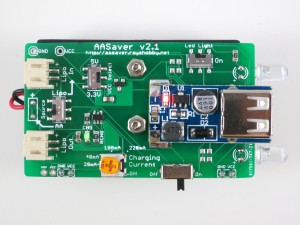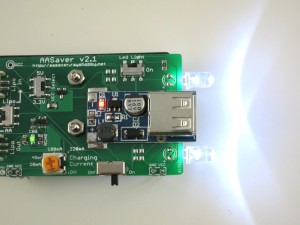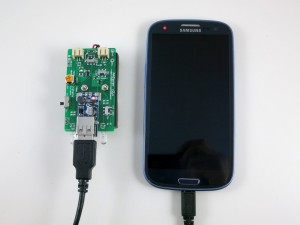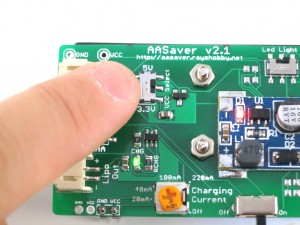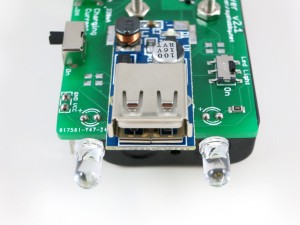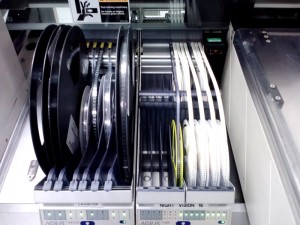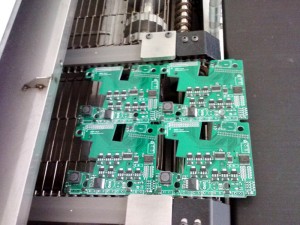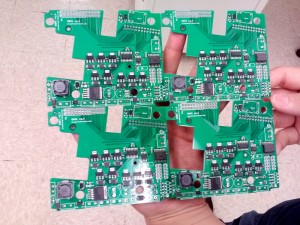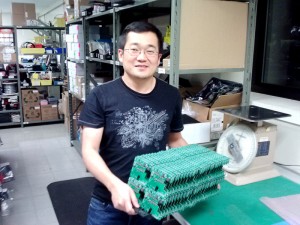This is a quick update that AASaver has been upgraded to version 2.1. It inherits all the capabilities of version 2.0, including built-in 5V voltage booster, flashlight LEDs, breadboard power pin headers, USB port (for charging USB devices), LiPo charger (with adjustable charging current). On top of those, version 2.1 adds a 3.3V LDO and a switch you can use to choose between 5V or 3.3V output voltage. This has been the main requested feature that was missing on version 2.0. Using an LDO (instead of changing the feedback resistors) has the advantages that the voltage booster and USB port always output 5V, while the 3.3V output is only effective on the LEDs and the breadboard pin headers. Here are some pictures:
For those who are curious what AASaver is: it’s a multi-purpose voltage booster for AA/AAA batteries. I came up with this idea initially when I was cleaning up a box of ‘dead’ AA batteries one day, and was surprised that many of them actually have pretty good output voltage, like 1.2 to 1.3V. Many AA batteries rejected from gadgets (e.g. remote controls and smoke alarms) still have plenty of juice, but these gadgets don’t have built-in booster circuit to bump the voltage up, so a lot of batteries are wasted this way. I was learning voltage booster at that point and had the idea of designing a multi-purpose circuit for AA batteries, so that I can harvest the remaining energy in ‘dead’ batteries for a variety of things, like lighting up LEDs, powering breadboard circuits, charging LiPo batteries etc. That’s how AASaver was invented. It’s not restricted to used or ‘dead’ batteries — if you plug in a fresh pair of batteries, you can also use it to charge your phone or other USB gadgets. It’s a really neat, useful, and inexpensive tool that everyone should have a few of these!
Below is the original video I made for AASaver. Keep in mind that the current version has a lot more features than shown in the video, including USB charging, LiPo charging. You can even modify it to become a solar charger.
With this new version, I’ve also prepared a more detailed User Manual, with assembly and usage instructions. We have just fulfilled an order from Micro Center so in the near future you may even find AASaver in the Micro Center retail stores 🙂
